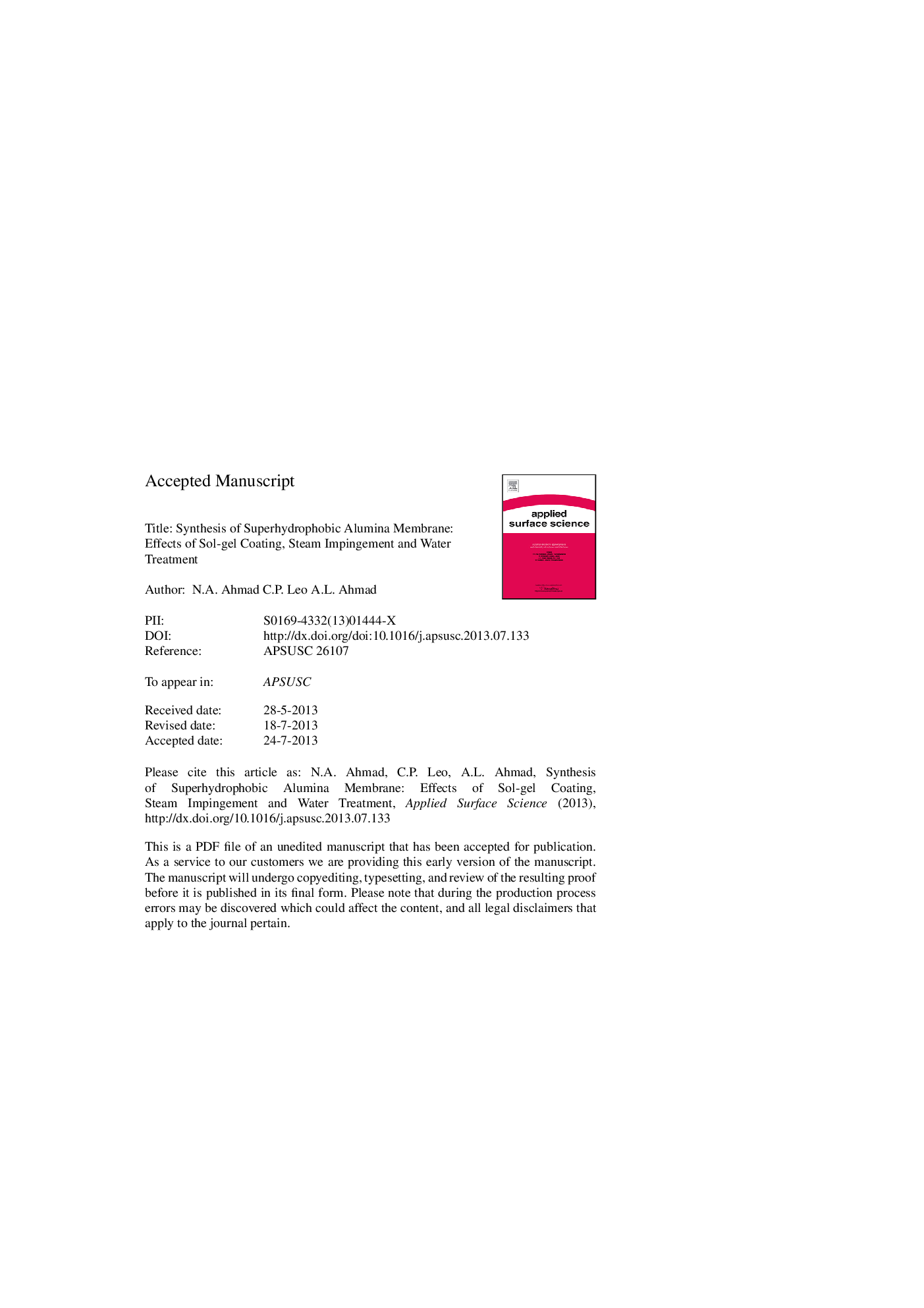| کد مقاله | کد نشریه | سال انتشار | مقاله انگلیسی | نسخه تمام متن |
|---|---|---|---|---|
| 5352644 | 1503679 | 2013 | 35 صفحه PDF | دانلود رایگان |
عنوان انگلیسی مقاله ISI
Synthesis of superhydrophobic alumina membrane: Effects of sol-gel coating, steam impingement and water treatment
ترجمه فارسی عنوان
سنتز غشاء آلومینای سوپر هیدروفوب: اثر پوشش سل ژل، نفوذ بخار و تصفیه آب
دانلود مقاله + سفارش ترجمه
دانلود مقاله ISI انگلیسی
رایگان برای ایرانیان
کلمات کلیدی
سوپر هیدروفوبیک، غشای سرامیک، سل ژل، خشونت، پیوند زدن،
موضوعات مرتبط
مهندسی و علوم پایه
شیمی
شیمی تئوریک و عملی
چکیده انگلیسی
Ceramic membranes possess natural hydrophilicity thus tending to absorb water droplets. The absorption of water molecules on membrane surface reduces their application in filtration, membrane distillation, osmotic evaporation and membrane gas absorption. Fluoroalkylsilane (FAS) grafting allows the conversion of hydrophilic ceramic membranes into superhydrophobic thin layer, but it usually introduces a great increment of mass transfer resistance. In this study, superhydrophobic alumina membranes were synthesized by dip coating alumina support into sol-gel and grafted with the fluoroalkylsilane (FAS) named (heptadecafluoro-1,1,2,2-tetra hydrodecyl) triethoxysilane. Steam impingement and water treatment acted as additional steps to generate surface roughness on sol-gel and most importantly to reduce mass transfer resistance. Superhydrophobic alumina membrane with high water contact angle (158.4°) and low resistance (139.5 ± 24.9 G mâ1) was successfully formed when the alumina membrane was dip coated into sol-gel for 7 s, treated with steam impingement for 1 min and immersed in hot water at 100 °C. However, the mass transfer resistance was greatly induced to 535.6 ± 23.5 G mâ1 when the dip coating time was increased to 60 s. Long dip coating time contributes more on the blockage of porous structure rather than creates a thin film on the top of membrane surface. Reducing the pore size and porosity significantly due to increase of coating molecules deposited on the membrane. Steam impingement for 1 min promoted the formation of cones and valleys on the sol-gel, but the macro-roughness was destroyed when the steam impingement duration was extended to more than 3 min. The immersions of membranes into hot water at temperatures higher than 60 °C encouraged the formation of boehmite which enhances the formation of additional roughness and enlarges pore size greatly. Thus, this work showed that the formation of superhydrophobic alumina membrane with low resistance is influenced by three factors; sol-gel dip coating time, steam impingement time and temperature of water treatment. The optimum dip coating time could promote appropriate thickness of the sol-gel layer on the membrane support. The highest surface roughness and porosity could be created when the sol-gel layer was further treated with optimum steam impingement duration and immersed in hot water at 100 °C. The presence of appropriate sol-gel thickness can reduce the penetration of FAS during the grafting and reduce the membrane resistance.
ناشر
Database: Elsevier - ScienceDirect (ساینس دایرکت)
Journal: Applied Surface Science - Volume 284, 1 November 2013, Pages 556-564
Journal: Applied Surface Science - Volume 284, 1 November 2013, Pages 556-564
نویسندگان
N.A. Ahmad, C.P. Leo, A.L. Ahmad,
